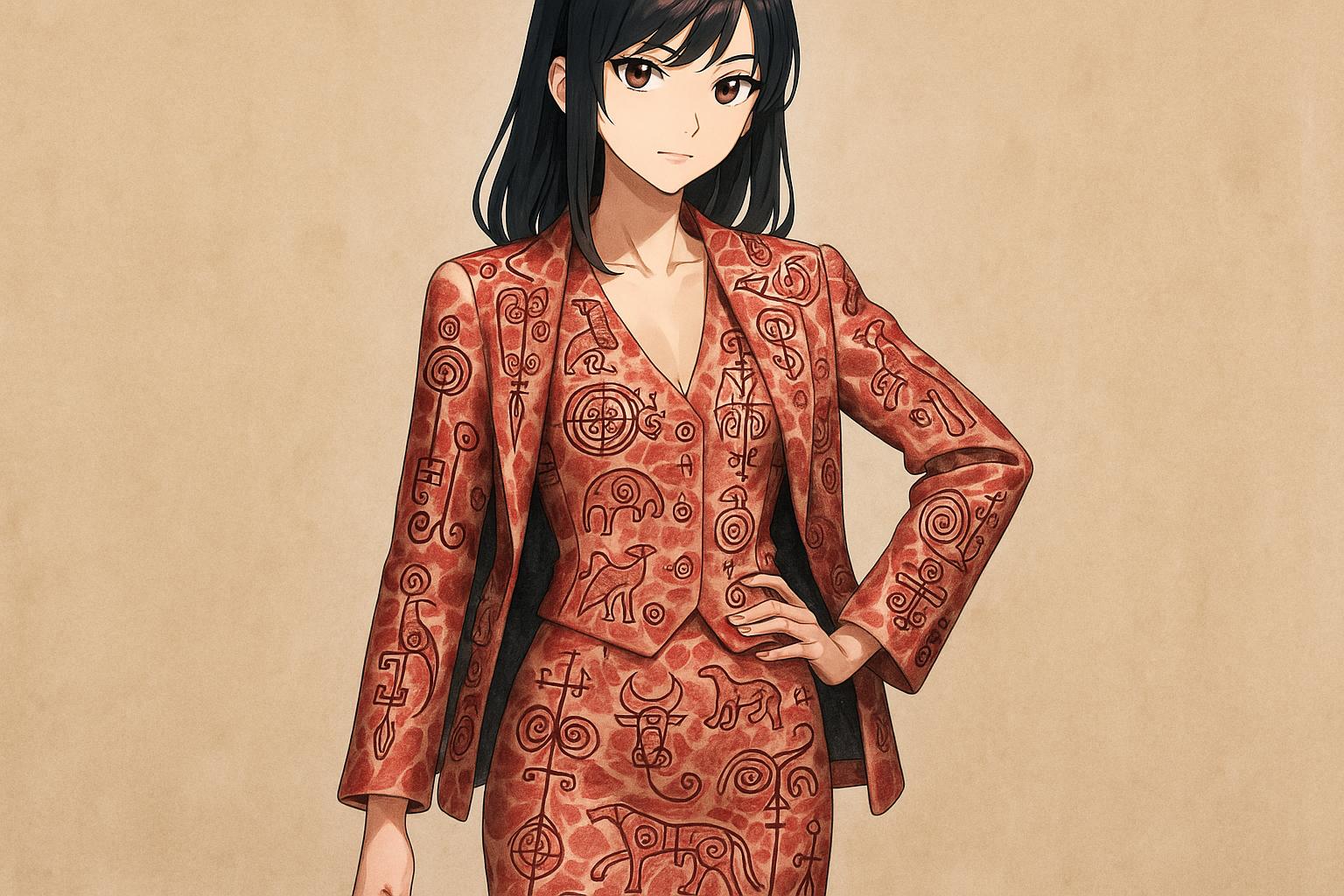A design student at Heriot-Watt University has crafted a striking ensemble that merges elements of Scotland's ancient heritage with contemporary materials. Verna Lai, who is on the brink of completing her Bachelor of Arts in Fashion at the School of Textiles and Design, has designed a three-piece outfit comprising a cape, skirt, and tank-top predominantly made from meat netting—a material usually associated with the packaging of meats.
The project originated when Scobie & Junor, a notable food packaging supplier based in the UK, commissioned Heriot-Watt University to create an innovative dress using their popular meat netting product. Known for its synthetic composition, which often includes natural rubber for elasticity, the meat netting serves a functional purpose in cooking by ensuring cuts of meat retain their shape during preparation. Using such a material for fashion represents a radical shift from its conventional use, prompting challenges and opportunities for creative expression.
Verna's design process, which took approximately three weeks, was a rigorous test of her skills and resilience. “It was a huge challenge, but you never really learn if you don’t push yourself,” she remarked, reflecting on the demanding nature of the project. The process involved hand and machine sewing, and Verna completed the three-piece outfit using around 60 metres of meat netting. Her innovative approach not only highlights her technical abilities but also her commitment to integrating cultural references into her work. “My outfit carries a lot of Scottish cultural inspiration,” she explained, noting her incorporation of Pictish symbols—distinctive to Scotland—into the design.
The importance of Verna's achievement extends beyond personal success; it also resonates within the realms of cultural heritage and sustainable fashion. Pictish designs play a significant role in Scotland's historical narrative, representing an artistic and linguistic legacy that remains influential. As Verna channels this rich history into her fashion work, she participates in a broader dialogue about how traditional symbols can be reimagined in modern contexts.
The culmination of Verna's efforts was presented at the IFFA trade fair, the world's largest event for the meat packaging industry, held in Frankfurt, Germany. This platform allowed her to showcase the melding of her artistic vision with an unconventional material. Dr Danying Yang, Verna’s academic supervisor and Assistant Professor at the School of Textiles and Design, praised her for "exceptional creativity, resilience, and technical skill," noting that the transformation of meat netting into a cohesive fashion piece exemplifies the school's nurturing of innovative design.
Simon Moorhouse, a Marketing Executive at Scobie & Junor, described the collaboration as a remarkable opportunity to highlight emerging talent while simultaneously transforming a functional product into a striking artistic statement. “Seeing our meat netting reimagined has been both inspiring and thought-provoking,” he said, emphasising how such creativity can come from unexpected sources.
In addition to serving as a statement piece, Scobie & Junor plans to exhibit Verna's outfit prominently in their headquarters in East Kilbride, further demonstrating the commercial viability of fusion between fashion and functional materials. The project not only illustrates the untapped potential of materials but also highlights the future direction of Scottish design—one that embraces heritage while boldly pushing the boundaries of fashion.
Verna's work reinforces the notion that innovation frequently arises from the most unlikely intersections of culture and material. In a world eager for sustainability and meaning, her creation stands as a testament to the power of creativity and the relentless spirit of a new generation of designers.
Reference Map:
Source: Noah Wire Services
